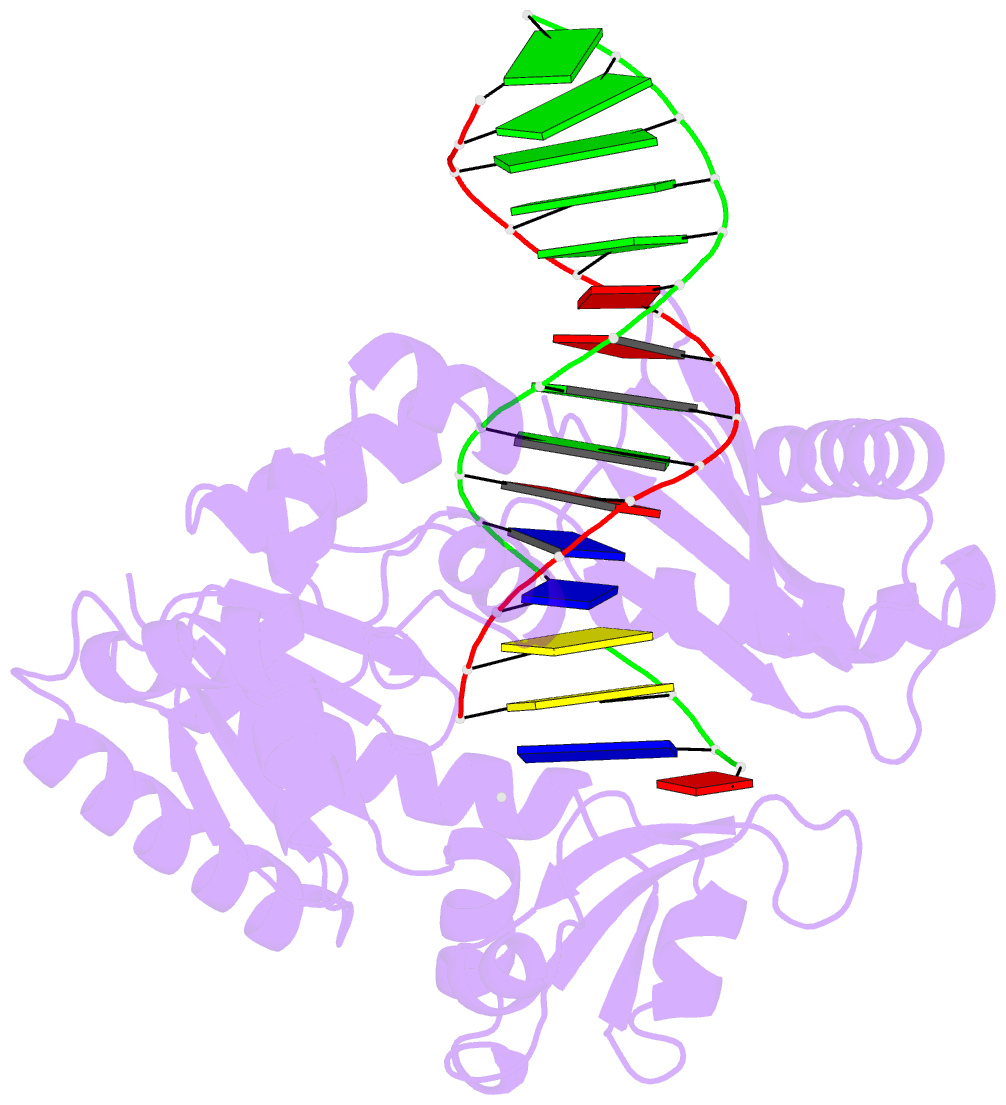Summary information and primary citation
- PDB-id
- 2j6s; SNAP-derived features in text and JSON formats;
DNAproDB
- Class
- transferase-DNA
- Method
- X-ray (2.5 Å)
- Summary
- Ternary complex of sulfolobus solfataricus dpo4 DNA polymerase, o6- methylguanine modified DNA, and datp.
- Reference
- Eoff RL, Irimia A, Egli M, Guengerich FP (2007): "Sulfolobus Solfataricus DNA Polymerase Dpo4 is Partially Inhibited by "Wobble" Pairing between O6- Methylguanine and Cytosine, But Accurate Bypass is Preferred." J.Biol.Chem., 282, 1456. doi: 10.1074/JBC.M609661200.
- Abstract
- We examined the effect of a single O6-methylguanine (O6-MeG) template residue on catalysis by a model Y family polymerase, Dpo4 from Sulfolobus solfataricus. Mass spectral analysis of Dpo4-catalyzed extension products revealed that the enzyme accurately bypasses O6-MeG, with C being the major product (approximately 70%) and T or A being the minor species (approximately 20% or approximately 10%, respectively), consistent with steady-state kinetic parameters. Transient-state kinetic experiments revealed that kpol, the maximum forward rate constant describing polymerization, for dCTP incorporation opposite O6-MeG was approximately 6-fold slower than observed for unmodified G, and no measurable product was observed for dTTP incorporation in the pre-steady state. The lack of any structural information regarding how O6-MeG paired in a polymerase active site led us to perform x-ray crystallographic studies, which show that "wobble" pairing occurs between C and O6-MeG. A structure containing T opposite O6-MeG was solved, but much of the ribose and pyrimidine base density was disordered, in accordance with a much higher Km,dTTP that drives the difference in efficiency between C and T incorporation. The more stabilized C:O6-MeG pairing reinforces the importance of hydrogen bonding with respect to nucleotide selection within a geometrically tolerant polymerase active site.





